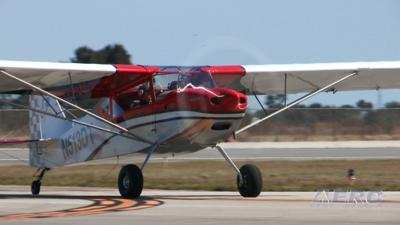The Special-Light Sport Aircraft Was Invented With The Sport Pilot Regulations
Last week we reported that the RANS S-20LS Raven has received its approval for special light sport certification. This week, let’s take a look at what that actually means.

It’s common to think of the sport pilot rules as breaking new ground for pilot standards, and they did. However, the ‘mega-change’ that occurred in 2004 with the publishing of the sport pilot rules was not about pilot certification; it was about aircraft certification.
For the first time since our existing aviation regulatory system was created in 1938 (excluding ultralights), a factory built aircraft could be produced and sold without meeting U.S. government regulated standards (AKA, Not FAA Type certificated). These aircraft would be industry approved, not FAA type certificated.
In a nutshell, an FAA type certificated aircraft meets design and testing requirements specified in government aviation regulations. FAR part 23 is the regulation in effect today for the certification and issuance of a Standard Airworthiness Certificate for light planes, but other rules have preceded it and still apply.
The plan became that the light aircraft industry would develop its own design, testing, manufacturing, and continued airworthiness rules, and if each manufacturer complied with the industry standards, the FAA would issue a Special Airworthiness Certificate. These aircraft are known as ‘special-light sport” aircraft (S-LSA).
Wow! This was a big change for aircraft certification. This plan meant that dozens of manufacturers would have to come to a consensus on what the certification standards would be. So, it was agreed to turn to an organization named ASTM International to work with the manufacturers to develop the rules.
ASTM International, formerly known as the American Society for Testing and Materials, is a globally recognized leader in the development and delivery of international voluntary consensus standards. ASTM standards are used around the world to improve product quality, enhance safety, facilitate market access and trade, and build consumer confidence.
An ASTM committee, titled F37, was created to address issues related to design, performance, quality acceptance tests, and safety monitoring for special light sport aircraft (S-LSA). The committee is composed of members of the aircraft industry and regulatory institutions such as the FAA.
These industry consensus standards are issued as ASTM documents and form the certification standards for S-LSA certification. Any aircraft built under these standards may only be certificated as an S-LSA in the United States. The aircraft manufacturer issues a certificate of compliance with industry standards to the FAA and the FAA issues the special light sport airworthiness certificate. The inspection at RANS by the FAA simply verified that they were in compliance.
The rules of ownership and continued airworthiness for an S-LSA are quite different from those of a FAA type certificated aircraft. If you’re looking at owning an S-LSA, it’s important that you, and any maintenance technicians working on the aircraft, are familiar with the regulatory differences.
(Image from file)
 NTSB Prelim: Lee Aviation LLC JA30 SuperStol
NTSB Prelim: Lee Aviation LLC JA30 SuperStol Classic Aero-TV: Curtiss Jenny Build Wows AirVenture Crowds
Classic Aero-TV: Curtiss Jenny Build Wows AirVenture Crowds ANN's Daily Aero-Term (05.30.25): Very High Frequency (VHF)
ANN's Daily Aero-Term (05.30.25): Very High Frequency (VHF) Aero-News: Quote of the Day (05.30.25)
Aero-News: Quote of the Day (05.30.25) ANN's Daily Aero-Term (05.31.25): Microburst
ANN's Daily Aero-Term (05.31.25): Microburst



